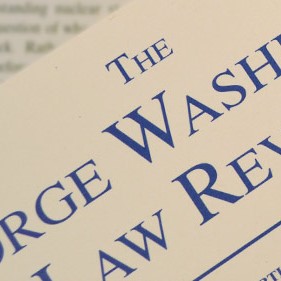Robert G. Bone · February 2011
79 GEO. WASH. L. REV. 577 (2011)
Adequacy of representation is a central concept in the law of case aggregation. Not surprisingly, it plays an important role in the final report of the American Law Institute’s Principles of the Law of Aggregate Litigation project. Ever since the seminal case of Hansberry v. Lee, the conventional wisdom has been that a nonparty (B) can sometimes be bound to the results of litigation choices made by a party (A) if A adequately represents B’s interests in the litigation. Yet, as I argue in this Article, proceduralists today—some seventy years after Hansberry v. Lee—still lack a clear understanding of what representation means in adjudication and why a nonparty can be bound on a representation theory.
Part I describes the puzzle of adjudicative representation. It shows that representation has no distinctive role to play in precluding absentees when outcome quality is the only goal, and, as a result, it is possible to justify a body of preclusion doctrine that extends well beyond current limits. Representation does have a special role to play when process-based participation is added to the mix, but the body of nonparty preclusion law it supports is so limited that even the class action has trouble fitting in. The result is a serious mismatch between justification and doctrine: outcome-based justifications go too far, and process-based justifications do not go far enough.
Part II examines three approaches to restoring the fit between doctrine and justification. All three accept the standard account of the process-based day-in-court right and try to restore the fit by defending some form of class action exceptionalism. One approach, which I call “mixed theory,” relies on a combination of features that supposedly make the class action a distinctive preclusion device. The second approach recharacterizes the class action with an administrative agency analogy that arguably removes process-based constraints. The third approach relies on a contractarian theory to argue that parties would agree to the class action (and not much else) in a suitably defined hypothetical bargaining situation. As Part II shows, none of these approaches work.
Part III approaches the puzzle in a different way. It takes the mismatch between justification and doctrine as reason to rethink justification and, in particular, to critically examine the conventional account of the process-based day-in-court right. Part III reconstructs the right to make it a better version of what the Supreme Court actually means it to be. The result is a process-based day-in-court right that rejects class action exceptionalism and is flexible enough to accommodate some forms of case aggregation and broader nonparty preclusion.
Part IV briefly sketches the implications of Part III’s analysis for one of the most difficult and controversial problems in class action practice today—the problem of limiting collateral attack on class settlements. In particular, process-based day-in-court constraints pose less of a challenge to a limited collateral attack rule when the day-in-court right is conceived as it should be—as a flexible right that accommodates competing concerns at its core.

